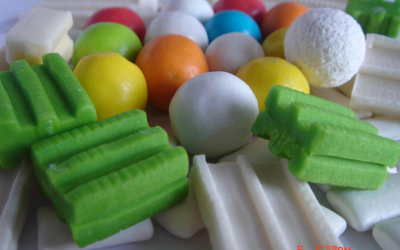The food grade Polyvinyl acetate (PVAC), as the main raw material of gummy gum, is the elastomer and chewy substance of this type of gum, and also a good film-forming and taste improving substance. The novel adhesive based on PVAC has a good taste, large foaming capacity, thick foam film, and is not sticky to the mouth. Sugar made from a soft rubber base is not loose or cracked in winter, not sticky or damp in summer, and has a long shelf life.
According to the taste requirements of each product, each manufacturer heats and mixes it with other raw materials in a certain proportion according to their specific formula, and then uses it as the raw material for making gummy gum base. Becoming a bubbling and chewing part of chewing gum, not to be swallowed.
The macromolecular substances that make up the gumbase are mainly elastomers and polyvinyl acetate. These two types of substances, when combined with other additives, impart appropriate viscoelasticity and plasticity to the gum base, and further combine with chewing gum to achieve appropriate chewiness, film-forming properties, and flavor retention. This article aims to provide a brief explanation of the preparation of gum based gum.
Vinyl Acetate Polymeric resin is a determining factor for some characteristics of chewing gum gum base. It can provide excellent plasticity and chewiness resistance. As a hydrophobic substance, it can also provide certain hydration ability to form a gum base with excellent fragrance and flavor holding ability. Polyvinyl acetate with a polymerization degree below 1000 is the most widely used resin material.
- A Typical Formula of Gumbase
Butyl rubber 16% Natural rubber 8%
Polyvinyl Acetate 36% Vinyl acetate gum 18%
Calcium carbonate 10% monohard acetic acid oil 8%
Microcrystalline wax 4%


